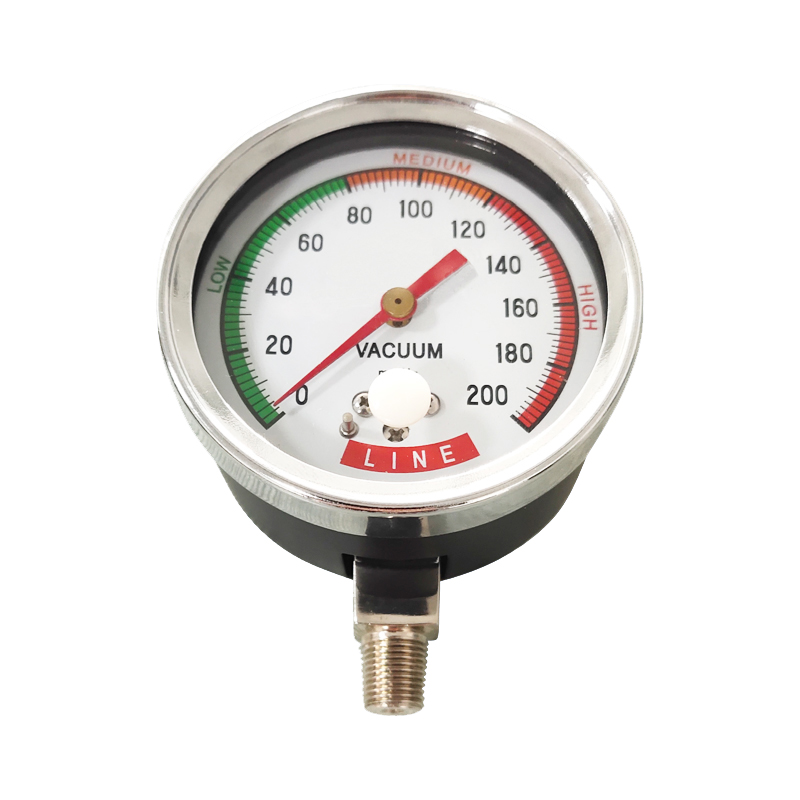
Dec . 24, 2024 05:12 Back to list
Differential Pressure Gauge for Monitoring Static Pressure in Various Applications
Understanding Static Pressure and Differential Pressure Gauge Service
In various industrial applications, the measurement of pressure is crucial for ensuring safety, optimizing processes, and maintaining equipment. Among the most important instruments used in these applications are static pressure and differential pressure gauges. These tools are essential for monitoring pressure conditions in systems ranging from HVAC units to industrial processes.
What Is Static Pressure?
Static pressure refers to the pressure exerted by a fluid at rest. In the context of air systems, it is the pressure that occupies the space around air ducts or in an enclosed environment, without any movement. This pressure is critical in HVAC applications where it ensures proper airflow distribution throughout a building. Maintaining the correct static pressure helps to optimize energy efficiency and comfort levels for residents.
Static pressure is measured in units such as Pascals (Pa) or inches of water column (inWc). To accurately measure static pressure, a static pressure tap is installed in the ductwork, allowing the gauge to read the pressure without obstructing the airflow.
What Is Differential Pressure?
Differential pressure, on the other hand, is the difference in pressure between two points in a system. This measurement is vital for various applications, including monitoring filter conditions in air handling units, assessing the performance of pumps, and evaluating the operation of HVAC systems. By measuring the differential pressure, operators can determine whether a system is operating efficiently or if maintenance is required.
Differential pressure gauges are typically used to compare the pressure on either side of a filter or a pump. This comparison allows technicians to gauge performance effectively. For example, a rising differential pressure across a filter indicates that it may be clogged and requires cleaning or replacement, thus preventing a drop in airflow and efficiency.
The Importance of Gauge Service
Both static pressure and differential pressure gauges require regular calibration and maintenance to ensure accuracy and reliability. Over time, these gauges can drift from their calibrated settings due to factors like temperature fluctuations, vibration from machinery, or general wear and tear.
Regular servicing of these gauges is critical for a few reasons
static pressure differential pressure gauge service

1. Safety In processes where pressure is critical, such as in chemical manufacturing or gas distribution, accurate pressure readings are essential to prevent hazardous conditions.
2. Efficiency Inefficient systems lead to increased energy consumption. By regularly monitoring static and differential pressures, operators can identify issues before they lead to significant inefficiencies.
3. Longevity of Equipment Consistent monitoring means that small issues can be caught early, preventing more significant failures that could be costly in terms of repairs and downtime.
Best Practices for Gauge Service
To maintain the integrity and accuracy of static pressure and differential pressure gauges, several best practices should be followed
- Regular Calibration Schedule periodic calibrations based on the manufacturer's recommendations or industry standards. This ensures that the gauges remain accurate over time.
- Visual Inspections Conduct regular checks for any visible damage, corrosion, or leaks around the gauge and its connections. Any signs of wear should be addressed immediately.
- Testing Under Controlled Conditions Where possible, test the gauges in controlled environments to verify their readings against known standards.
- Documentation Keep detailed records of maintenance and calibration activities. This documentation can assist in troubleshooting and serve as a compliance record for industry standards.
Conclusion
In summary, static pressure and differential pressure gauges play pivotal roles in various industrial sectors by providing essential measurements that ensure system integrity, operational efficiency, and safety. Regular servicing and maintenance of these gauges are indispensable for achieving optimal performance and minimizing downtime. By investing time and resources into the upkeep of these critical instruments, organizations can enhance not only their operational reliability but also their overall productivity and safety standards. Understanding and implementing proper gauge service protocols will ultimately contribute to the success of any industrial operation.
-
High-Quality Pressure Gauge on Fire Extinguisher - Reliable Water Fire Extinguisher Pressure Gauge Suppliers & Exporters
NewsJul.08,2025
-
High-Quality Water Pressure Differential and Gauge Kit Reliable Manufacturers & Competitive Quotes
NewsJul.08,2025
-
High-Precision Digital Diaphragm Pressure Gauge – Reliable Manufacturer & Competitive Quotes
NewsJul.07,2025
-
Wholesale Diaphragm Pressure Gauge Supplier - Premium Quality & Competitive Price
NewsJul.07,2025
-
Digital Diaphragm Pressure Gauge Reliable & Precise Measurement Top Manufacturers Quotes
NewsJul.06,2025
-
High Accuracy Piston Type Differential Pressure Gauge - Reliable Manufacturers & Competitive Quotes
NewsJul.06,2025
